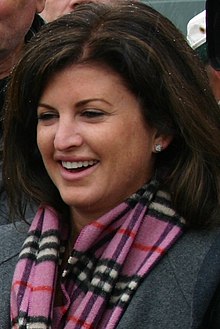Conservative Party (Canada)
| Leader of the Conservative Party of Canada |
|
|---|---|
| Formation | December 8, 2003 |
| First holder |
John Lynch-Staunton (interim) Stephen Harper |
| Deputy | Denis Lebel |
The Conservative Party of Canada (French: Parti conservateur du Canada), colloquially known as the Tories, is a political party in Canada. It is positioned on the right of the Canadian political spectrum. The party's leader from 2004 to 2015 was Stephen Harper, who served as Prime Minister from 2006 to 2015.
The Conservative Party is the successor to multiple right-wing parties which have existed in Canada for over a century. Until 1942, one of the party's predecessors was known as the Conservative Party of Canada, and participated in numerous governments. Before 1942, the predecessors to the Conservatives had multiple names, but by 1942, the main right-wing Canadian force became known as the Progressive Conservatives. In 1957, John Diefenbaker became the first Prime Minister from the Progressive Conservative Party, and remained in office until 1963.
Another Progressive Conservative government was elected after the results of the 1979 federal election, with Joe Clark becoming Prime Minister. Clark served from 1979 to 1980, when he was defeated by the Liberal Party after the 1980 federal election. In 1984, the Progressive Conservatives won with Brian Mulroney becoming Prime Minister. Mulroney was Prime Minister from 1984 to 1993, and his government was marked by free trade agreements and economic liberalization. The party suffered a near complete loss after the 1993 federal election, thanks to a splintering of the right-wing; the Conservatives' other predecessor, the Reform Party, led by Preston Manning placed in third, leaving the Progressive Conservatives in fifth. A similar result occurred in 1997, and in 2000, when the Reform Party became the Canadian Alliance.
...
Wikipedia


